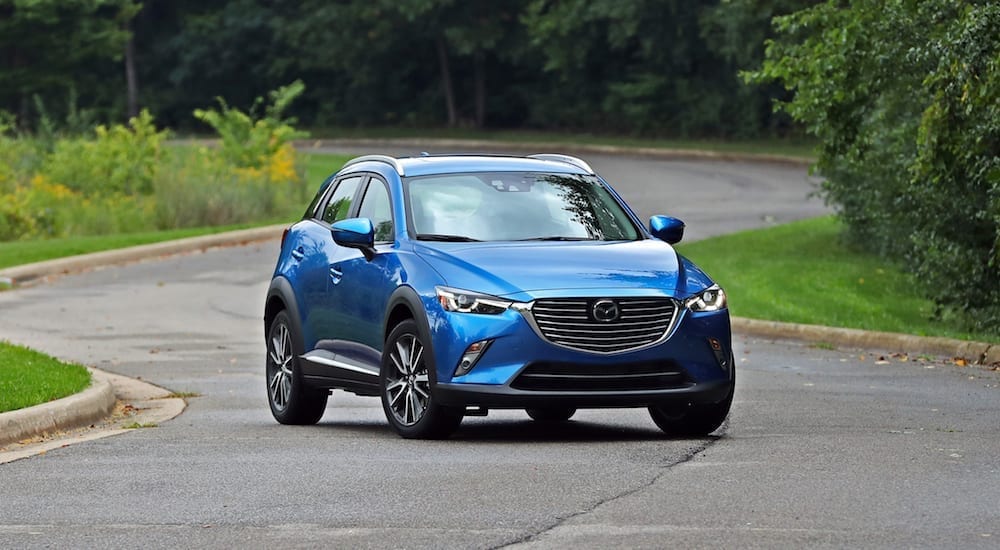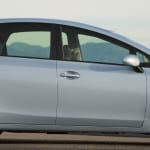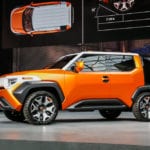While Hurricane Harvey may have caused a slump in car sales here in the U.S., Mazda and Toyota are betting big in 2018. A $1.6 billion assembly plant is slated to be built near Huntsville, Alabama, which when fully operational by 2021, will produce up to 300,000 vehicles a year. However, some commenters have expressed concerns about the move, due to a possible lack of labor in Alabama as well as the recent slow in automobile sales. But there’s more method than madness to this deal.
Mazda’s Plan
While auto companies have been selling fewer cars from Albany, New York to Anaheim, California, crossover vehicles have seen a sizeable uptick in sales from 2016-2017. With this new plant, Mazda is hoping to increase production of their 2018 CX-3 in order to appeal to the U.S. market. Mazda’s traditional offerings, namely light-weight sports cars and sedans, are both declining in terms of sales. So the injection of supply for Mazda’s 2018 CX-3 will most likely pay dividends when the plant finally opens.
Concerns of excess capacity have also been raised, though Mazda executives are optimistic that they will be able to increase sales by 50,000 vehicles a year. The plant’s capacity will be split down the middle between Mazda’s 2018 CX-3 and Toyota’s 2018 Corolla. Regardless, increasing production capacity during a period of decline does pose some risks. Despite Mazda’s three percent decline in sales from 2016 to 2017, the company’s hopes of increased sales, specifically of the 2018 CX-3, make the local plant important in terms of cornering the crossover market. But if demand for the vehicle fails to meet expectations, the plant could prove to be a costly mistake for Mazda.
Local Impact
Whether or not the plant in Alabama will be a boon or a burden to Mazda’s bottom line remains to be seen, but state officials and citizens are optimistic about the expected impact the plant will have on the local economy. An estimated 4000 jobs will need to be filled for the plant to be operational, just about four percent of Albany, New York’s total population. This number should serve to emphasize how large an enterprise this new plant will be, and the State of Alabama will be crucial in maintaining the infrastructure needed for the plant to be a success.
Limestone County Commissioner, Mark Yarbrough, told the local CBS affiliate WHNT News that the plant will bring $200 million to the local economy. With an unemployment rate of 3.2 percent in the county, one of the lowest in the state, the Mazda-Toyota plant would possibly struggle to find the labor needed for the plant. However, Alabama Commerce Secretary, Greg Canfield, said that a lack of labor is the least of the state’s concerns, and acknowledged that plans are in place to keep the plant operational.
Once completed, Mazda’s new 2018 CX-3 factory will make Alabama the fourth largest state in terms of automotive manufacturing. The impact of this cannot be understated; Mazda-Toyota’s move to Alabama will bolster the latter company’s impact on the U.S. market, help the former maintain supply for one of the best-selling vehicles across the world, as well as reinvigorate the local economy.
Maintaining Momentum
Since the partnership between Mazda and Toyota was finalized in late 2017, the two companies focus has been, as Toyota Chairman Akio Toyoda said: “A partnership in which those who are passionate about cars will work together to make ever-better cars.” This new plant is the first major move made by the partnering companies since plant closures by both in the last decade—a Toyota-General Motors plant in 2010 and a Mazda-Ford plant in 2008.
A key aspect of the partnership, aside from the increased capacity enabled by the new Huntsville plant, is also an increase in electric vehicle development, including self-driving cars. Mazda’s partnership with the larger company Toyota will be useful in offsetting the cost of pricey new technologies. In addition, Mazda’s shift in sales philosophy and brand identity in 2016, which saw the company focus more on customer satisfaction and vehicle quality, is expected to help assuage criticism levied at Toyota for producing more commoditized vehicles.
A Changing Market
Increased development in the electric and self-driving car market has been an influencer on the two companies as well. With technology giants like Apple and Google trying their hands at the car market, smaller auto manufacturers like Mazda, who can add the expertise IT companies lack in their burgeoning automobile departments, make for interesting acquisitions for companies looking to take market share away from traditional car companies.
As such, Toyota has been extending its hand to smaller companies such as Subaru Corp and Suzuki Motor Corp to offset the inevitable incursion of new competitors. By banding together and attempting to appeal to current car consumers with the aforementioned 2018 Mazda CX-3, Toyota and Mazda have positioned themselves on a firm footing for the inevitable future. Though only time will tell if Mazda will be able to increase sales enough to offset the costly new facility it certainly has piqued the interest of financial analysts. Now all Mazda and Toyota have to do is elicit that same enthusiasm amongst average consumers in places like Albany, New York.
Conclusion
For now, the initial thought on Mazda and Toyota’s new partnership has been positive, with analysts at Citi reporting that the increased production of the 2018 Mazda CX-3 is a rational move for both companies. As is the joint ownership of the new plant, meaning both companies can expect less risk in the face of declining car sales by shouldering the burden together. By building this plant domestically, both companies, but Mazda especially, will have an easier time distributing the vehicles among local dealers and help stimulate the U.S. economy as a whole. If demand for crossover vehicles continues to rise and Alabama can attract the necessary workforce, this move by Mazda and Toyota looks to be a calculated risk with major upsides for all involved.




